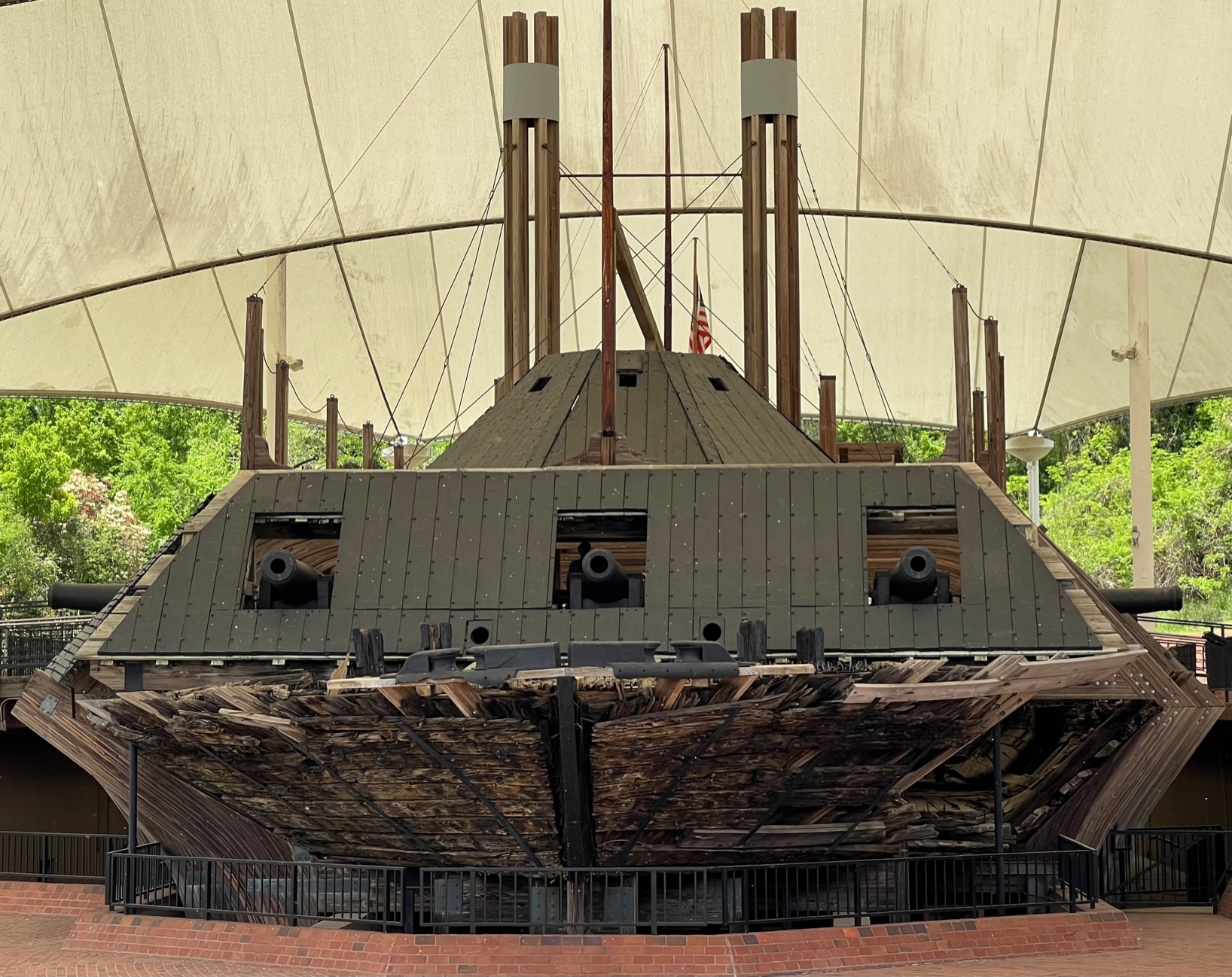USS Cairo
The USS Cairo is one of seven ironclad river gun boats built during the Civil War. The Cairo is a city class gun boat named after Cairo, Ohio. The ships in this class were nicknamed “Pook’s Turtles” after their designer and the fact that they resembled turtles.
The Cairo served for just under a year before sinking in the Yazoo River by mines during an anti-mining operation. It was recovered 102 years later.
They were very careful in the recovery of this boat. Pulling it out of the water would have ripped it apart. They had to cut the boat into three sections and remove one section at a time to keep it as together as possible.
Only four of the ironclads remain. The USS Cairo in Vicksburg, Mississippi is the last of it’s type and the best example of an original Civil War ironclad you’ll find.

The Park Ranger at Vicksburg asked if I was a veteran. After showing him identification he issued me a Military Pass good for one year of entry into all National Parks. I visited the entire park but will be focusing on the main reason for my visit: The USS Cairo.

There is a parking area by the Cairo which is under a tent to protect it from weather.


The Cairo is 175 feet long and 50 feet wide.




Three of the 13 cannons on the Cairo were located in the front of the ship.
Mines, referred to at the time as torpedoes, caused two holes in the Cairo. The hole you see in the port side of the bow was the first and is believed to have been the primary cause of it’s sinking. It sank 36 feet in 12 minutes.
The original iron was recovered. Most of the wood that survived is the lower portion because it was sunk in the mud.
The original smoke stacks were knocked down by a sister ship to conceal the location of the wreckage. The city ironclads were distinguished by a colored band painted on their smoke stacks. The Cairo had a gray band painted on it’s stacks.


Each side of the boat has four cannons. Each cannon required six men to fire it. When the ship was recovered, three of the cannons were loaded.
All of these cannons are original but the cradles they’re sitting in had to be reproduced. The original cradles are in the museum next to the Cairo.




As you can see much of the upper wood has been replaced where the lower wood is original.
The officer’s quarters were located on either side of the wheelhouse. The Captain’s quarters were in the back.

The officers stayed in the back of the ship because it was cooler with the fireroom and boilers being in the front half of the ship.

This is where the Captain’s quarters were located.

There were two cannons in the rear of the ship. With four on either side and three in the front that brings us to the total of 13 cannons.


The paddle wheel was 15 feet wide and constructed of iron. The paddles themselves were made of wood. The paddle wheel was not protected by armor so it was susceptible to enemy fire from an elevated position.


These two rudders had cables attached to them that went to the pilot house for steering the boat.





These iron plates were 2 1/2 inches thick and were backed by oak wood planks for support.







The curved portion of the plating you can see on the right side below was made from railroad tracks. This was done because the side plating could only be manufactured in flat panels.

We are now inside the Cairo. We are facing the three forward guns and directly below the pilot house. You can see the railroad track armor to the right.

This winch was used to move the cannons and raise the anchor. It was powered by the steam engine but could be turned manually in the case of an emergency.


This is what it might look like if we were firing in an enemy Nissan.


These are the firebox doors where coal was shoveled to keep the engine running. I would have to think this is the worst job on the ship.


Directly above us is the Pilothouse where the ship was steered.







These are the pistons that pushed the oscillating arms.

This one of the oscillating arms which are what turned the paddle wheel. Full speed for this boat was 9 MPH.

The paddle wheels were built inside on river boats but they were not amour plated. As a result they were susceptible to enemy fire from an elevated position.


These large tubes are the boilers that created the steam to power the engine.


This is a look at the pilot house from the outside.



The skylights you see above the gun deck provided natural light inside the boat.


The museum on the right was closed the day I visited it. It mostly contains personal items from the crew that were recovered.

This is a view of the Yazoo River from Fort Hill. The Yazoo is where the Cairo was sunk.



I enjoyed my visit to see The Cairo at Vicksburg National Military Park. It was unfortunate that the indoor portion of the museum was closed during my visit, but at least I got to see the boat. I highly recommend making a stop here if you’re ever in Northwest Mississippi.





















